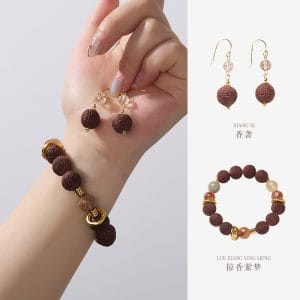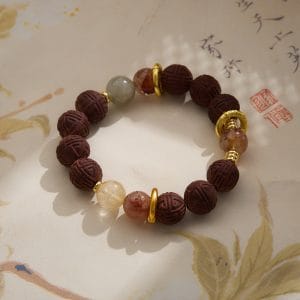The evolution of Chinese lanterns
The evolution of Chinese lanterns
The evolution of Chinese lanterns
Background
The soft, warm glow of a Chinese lantern has symbolized celebration, hope, and community for centuries. Traditionally crafted from silk, paper, or bamboo, these luminous artifacts are central to festivals like Lunar New Year and the Mid-Autumn Festival, casting a magical light that connects generations. Yet, in our modern era of heightened environmental awareness, a new iteration is emerging—one that honors this rich cultural legacy while embracing sustainability: the upcycled Chinese lantern.

Why It Matters
Upcycling, the process of transforming discarded materials into objects of greater value, has found a perfect canvas in the iconic form of the Chinese lantern. Artists and eco-conscious creators are reimagining these traditional items using materials that would otherwise contribute to landfill waste. From repurposed plastic bottles and scrap fabric to discarded paper and broken ceramics, these elements are meticulously assembled into lanterns that tell a new story—one of resourcefulness, creativity, and respect for the planet.
The process of creating an upcycled lantern often begins with collection and cleansing. Materials like glass jars, metal scraps, or outdated textiles are gathered, cleaned, and prepared for transformation. This phase is crucial, as it ensures the final product is not only beautiful but safe and durable. Artisans then draw on traditional lantern-making techniques—such as framing, covering, and decorating—while integrating modern tools like non-toxic adhesives, LED lights, and solar-powered components to enhance functionality and sustainability.
According to a recent study published in the Journal of Sustainable Craft and Design, upcycled products, including decorative items like lanterns, can reduce waste generation by up to 40% in households that engage in DIY repurposing projects. The research highlights that cultural artifacts adapted through upcycling not only preserve traditional aesthetics but also promote environmental literacy and community involvement in sustainability practices.
Beyond their environmental benefits, upcycled Chinese lanterns serve as powerful educational tools. They offer a hands-on way to discuss topics like waste reduction, cultural history, and artistic innovation. Workshops and community projects centered around creating these lanterns have sprung up globally, fostering intergenerational dialogue and collaborative creativity. Participants often leave with not just a handmade lantern, but a deeper appreciation for mindful consumption and cultural continuity.
In the realm of decor, upcycled lanterns blend seamlessly into both traditional and contemporary settings. A lantern crafted from reclaimed wood and stained glass fragments might adorn a modern living room, while one made from vintage textiles could complement a rustic, bohemian space. Their versatility lies in the unique narrative each piece carries—the history of its materials and the intention behind its creation. This individuality makes them cherished items, often passed down as heirlooms that embody both heritage and forward-thinking values.
As we look to the future, the upcycled Chinese lantern represents more than just a trend; it is a testament to human adaptability and reverence for nature. By re-envisioning a classic symbol through the lens of sustainability, we not only reduce waste but also enrich our cultural expressions. These lanterns remind us that innovation need not come at the expense of tradition—instead, it can illuminate new paths for both to thrive harmoniously.
You may also like
The Palace Museum Paper-Cut Light Art Fridge Magnets: Chinese Cultural Style Creative Gift Series
Price range: $27.00 through $36.00 Select options This product has multiple variants. The options may be chosen on the product pageBambooSoundBoost Portable Amplifier
Original price was: $96.00.$66.00Current price is: $66.00. Add to cartHandwoven Zhuang Brocade Tote Bag – Large-Capacity Boho Shoulder Bag
Original price was: $178.00.$154.00Current price is: $154.00. Add to cartAncient Craftsmanship & ICH Herbal Beads Bracelet with Yellow Citrine & Silver Filigree Cloud-Patterned Luck-Boosting Beads
Original price was: $128.00.$89.00Current price is: $89.00. Add to cartAncient Craft Herbal Scented Bead Bracelet with Gold Rutile Quartz, Paired with Sterling Silver (925) Hook Earrings
Original price was: $322.00.$198.00Current price is: $198.00. Add to cartGuangxi Zhuang Brocade Handmade Tote – Ethnic Boho Large-Capacity Shoulder Bag
Original price was: $172.00.$150.00Current price is: $150.00. Add to cart













